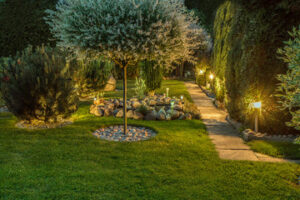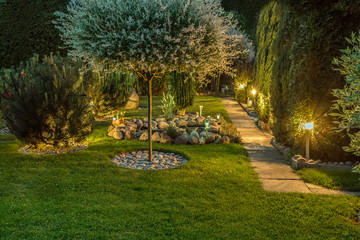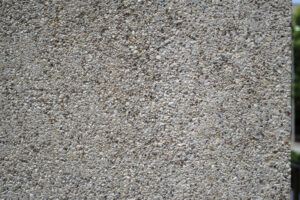Landscape lighting fixtures are exposed to a lot of harsh weather. It’s essential to check them out regularly for signs of wear and tear.
This easy DIY project can be done in a few hours. You’ll need a voltmeter, wire nut connectors, and pliers. First, make sure the transformer is plugged in and that it has the correct voltage. For professional help, contact Landscape Lighting Repair Orlando now!
Landscape lighting is a fantastic way to accentuate the beauty of your property at night. However, like any system it requires some maintenance and repairs to ensure it functions as intended. Oftentimes these repairs can be done yourself without the need to call in a professional, but some may require the assistance of an outdoor lighting specialist.
The most common landscape lighting repair is changing a light bulb. This can be done in a few simple steps, turning off the power to the fixture, removing the old bulb and replacing with a new one. It is recommended that you use a bulb that is rated for outdoor lighting, as these bulbs will last longer and will not burn out as quickly.
Changing a light bulb is the most important thing you can do to keep your landscape lights functioning correctly. You can find the appropriate replacement bulb by consulting your light fixture manual or checking the online catalogues for a specific fixture. A quick search will provide you with a list of available options and their specifications, including Kelvin temperature, lumen output, and beam spread/angle.
Other issues that may arise with fixtures include:
- Cleaning the glass. One of the best ways to keep your landscape lights looking their best is to clean the glass lenses on a regular basis. Using a soft rag and soapy water is typically sufficient, though some vendors recommend the use of a non-toxic glass cleaner such as CLR or Brillo.
- Verifying the timer or photocell settings. If your landscape lighting system is equipped with a timer or photocell, it is important to check that the settings are correct and that they are running at the proper times of day and night.
- Checking for corroded wires or connections. These can be caused by a number of things, such as a faulty ground stake, poor installation, or simply age. Checking for rust or corrosion at the connector points, as well as testing them with a digital voltage meter to make sure they are getting the proper amount of voltage, can help determine what the problem is.
Wires
The wires that power landscape lighting are often overlooked and can be a cause of outages. These wires run from the transformer to the light fixtures and are usually buried underground in the case of a direct burial system. These wires are prone to shorts due to abrasion or corrosion. This can happen if the system is improperly installed, the wiring has been exposed to moisture, or if splices aren’t properly sealed.
To prevent these shorts, you should examine your landscape lighting wires and make sure they are intact. You should feel along the length of the cord to see if it feels warm or if there are any broken spots. If you find any, you can repair them using a simple tool. First, get some heat-shrink tubing, like you would find at an electronics or craft supply store. Then, cut a 3’ length of the tubing and slip it over the plug, a little bit beyond the plastic body of the plug. Next, slide the tubing a little further and use a lighter to shrink it around the damaged part of the wire. This will seal the abrasion and protect it from further damage.
Lastly, you should also inspect the connections of your wires for signs of corrosion. If you see any, you can clean them with an emery board or sandpaper and spray with contact cleaner to help prevent future problems.
Another common issue that may be causing your lights to go out is if they are not getting enough voltage from the transformer. To check this, you can use a voltage meter to determine if your wires are getting enough power or not.
Finally, you should perform regular cleaning and maintenance tasks to keep your landscape lights in good condition. This includes trimming back plants and shrubs that are overgrown or touching your light fixtures. This will improve illumination, prolong the life of your lighting and help avoid more expensive repairs down the road. For more information on cleaning and maintenance for your outdoor lighting system, consult the manufacturer’s website or your landscape lighting installer.
Light Bulbs
Getting the right light bulbs for your landscape lighting fixtures is a must. They need to be the correct size and color (Kelvin) or they will not produce a good light. To do this you need to use a multi-meter to find out what the voltage is at the bulb mount. You also need to determine if the bulbs are being supplied with AC or DC. Typically, LED bulbs will only work with DC and not AC.
After you have figured this out you need to carefully remove the existing lights from the fixture by unscrewing them and pulling them out. It is important to do this carefully so that you don’t damage the wire connections or the plug that goes into the ground stake. You will probably need to dig or pry a little dirt out from the bottom of the stake so that you can get your tool under it and lift it up.
Once you have the new light bulbs it is time to put them in the fixture. You will need to look for corrosion on the socket’s metal components, which can be a problem for landscape lighting fixtures. A corroded socket will not make good contact with the bulb and won’t provide the proper amount of power to the bulb.
Another thing that can cause a light to burn out prematurely is oil on the glass. It is important to clean the glass of any oil so that there will be no problem with the arc produced by the filament. It is also a good idea to wipe down the glass with a wet cloth every once in awhile so that it stays clean.
It is also a good idea to check the color temperature of the new bulbs before installing them. Many people are surprised to learn that they can find a wide range of light bulbs with different colors and Kelvin ratings. If you have a lot of bulbs that are a different color temperature it can cause a mismatch between the light colors in the yard and the indoor lighting.
Timer
It is important to have proper landscape lighting maintenance to ensure the health and longevity of your system. Proper care can help avoid expensive repairs or replacements.
Most landscape lighting systems come with a timer that allows you to control when your lights turn on and off each night. However, over time your timer may stop working or not function properly. There are several things you can try to troubleshoot and fix the problem on your own.
- First, confirm that your transformer has power. This can be done by using a voltmeter or plugging a device into the receptacle of your transformer. If the voltmeter reads zero or no voltage then your transformer has lost its power and you will need to replace it.
- Check that the timer is set to a current time of day. This can also be done by using a voltmeter on the receptacle of your transformer or checking the current time of day at your home. If the timer is set to a different time of day than your desired lighting schedule then you will need to manually change the settings on your timer.
- Look at the green and red pins on your timer to make sure they are in the correct AM and PM slots. You should only have one green and one red pin unless you are running multiple programs at the same time.
- WD-40 is great for getting old mechanical timers working again. Just be careful not to get any on your electrical components as it can wash them out and cause issues down the line.
- Finally, it is a good idea to replace your blown bulbs on a regular basis to ensure you have enough light for the proper amount of coverage and to prevent any further damage. It is recommended to use a high-quality halogen bulb for outdoor landscape lighting as they will last longer than standard incandescent bulbs.
Landscape lighting can be a beautiful accent to your home and garden. It can also be a headache when it doesn’t work as expected. By following the tips above and using a little detective work you can usually find the source of your problem and solve it yourself in just a few steps. If you are still having problems after trying these tips it is time to call a professional.



